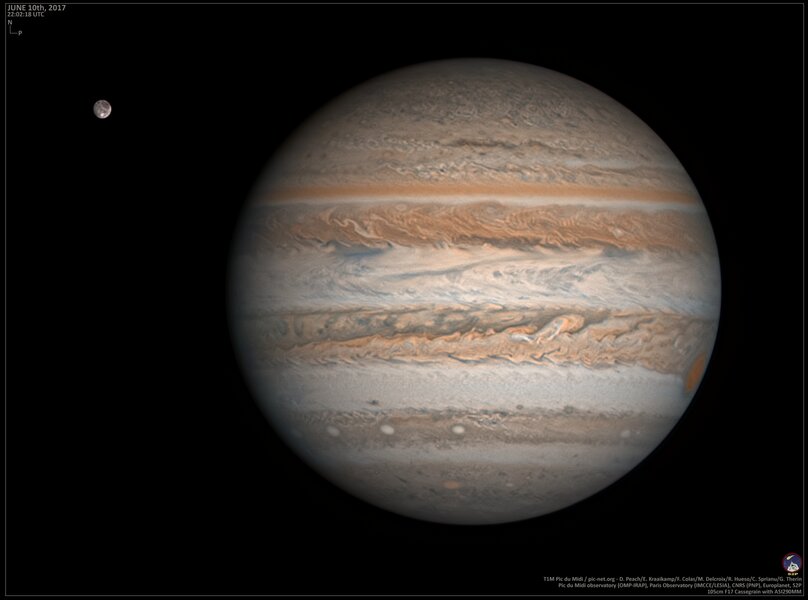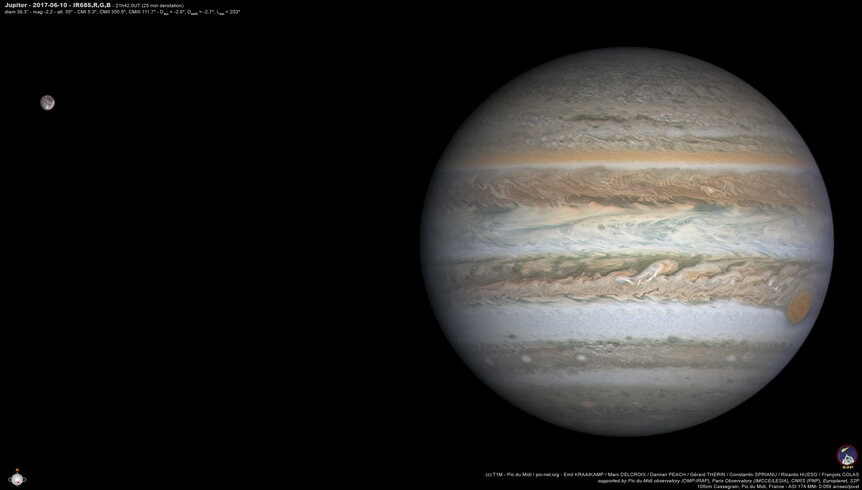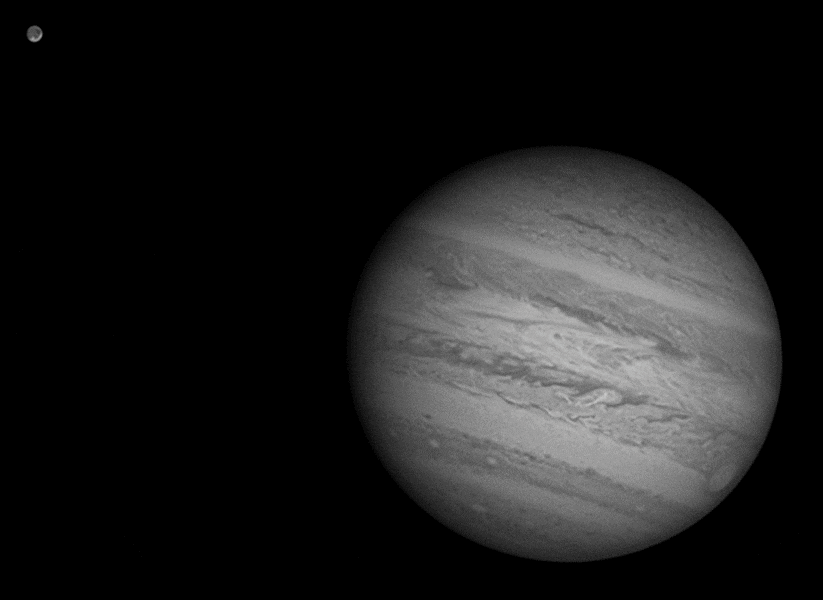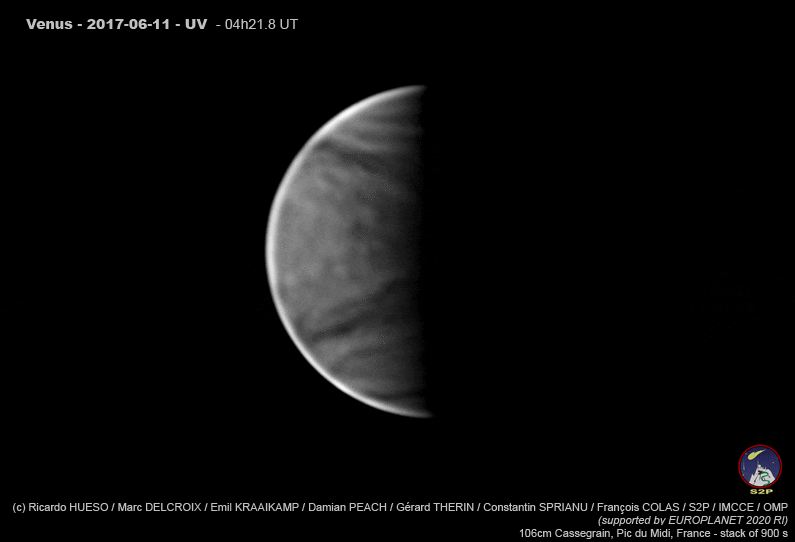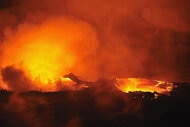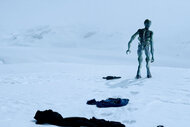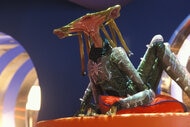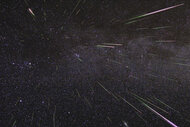Create a free profile to get unlimited access to exclusive videos, sweepstakes, and more!
Believe it or not, these planetary pictures were taken from Earth!
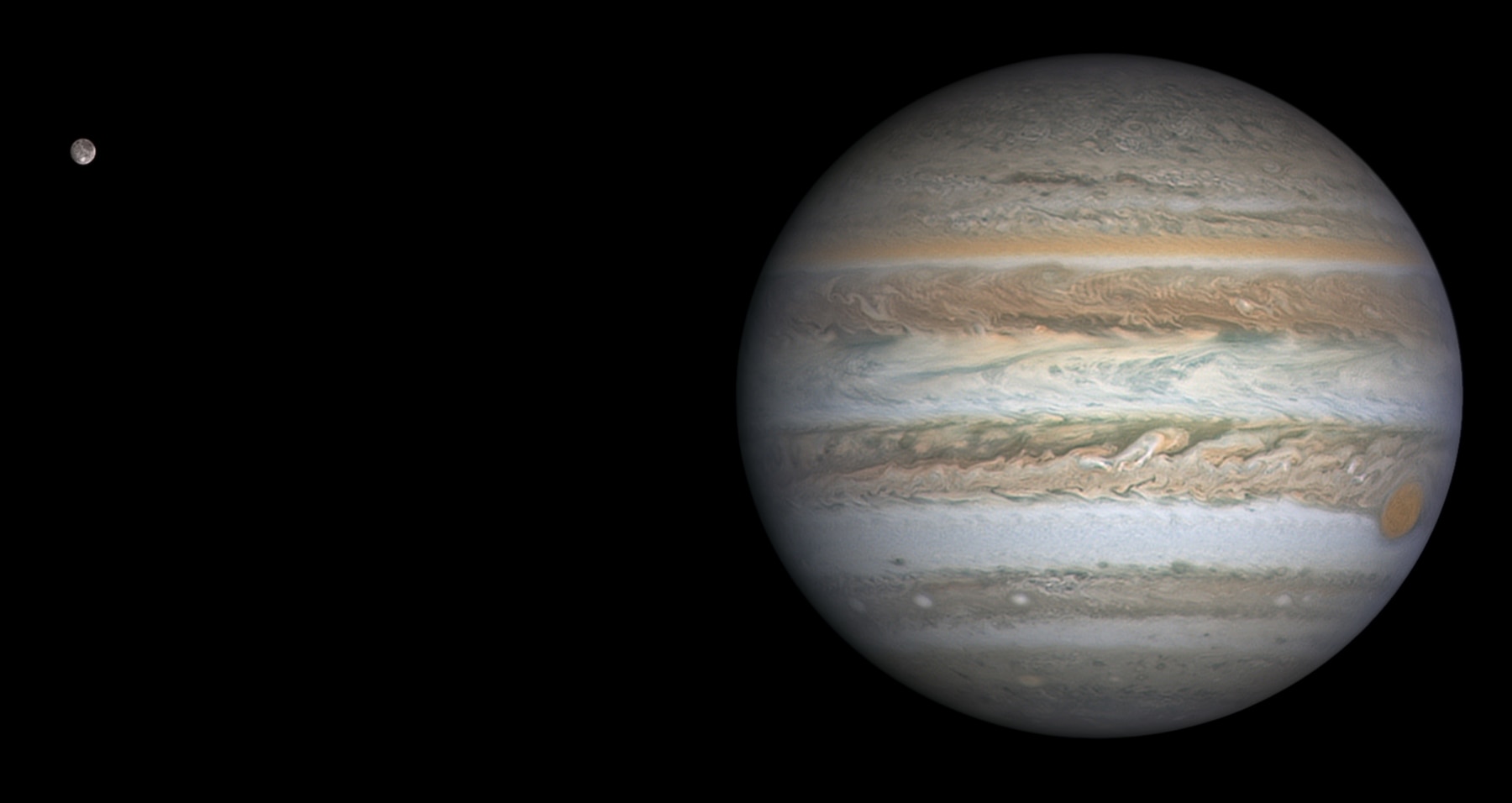
After those two huge solar eclipse posts this week (glad you asked: they are here and here), how about a bit of planetary eye candy for you?
If you go outside tonight after sunset and look to the sky, you might notice a bright "star" high to the southwest (for Northern Hemisphere observers). That's the planet Jupiter. If you turn and look southeast you can also see Saturn, another bright star-like shining object.
To the eye, they are unresolved, just dots. But to a powerful telescope in the right location, they are glorious. Behold!
Holy wow! That, me droogs, is Jupiter and its moon Ganymede. And that image was taken not by a space probe orbiting the giant planet, but by a telescope right here on Earth!
It was taken on June 10, 2017, using a 1-meter telescope at the Pic du Midi observatory, one of the best (if not the best) spots on Earth to observe the planets. The observatory is in the French Pyrenees, and has very stable air around it. Unsteady atmospheric conditions blur out small details (astronomers confusingly call this “seeing”), but the smooth flow around Pic du Midi means really high-res images can be taken.
That image, and all the others in this article, were taken as part of a professional-amateur collaboration, in which truly advanced and expert amateur astronomers get access to the ‘scopes and then process the images. The scientific purpose is to keep track of the outer planets (Jupiter, Saturn, Uranus, and Neptune) and Venus, monitoring their atmospheric patterns and wind speeds to aid spacecraft sent to investigate them up close.
But more than that, this sort of collaboration is a meeting of brains, a sharing of experience, that allows everyone to learn from each other’s efforts. The image above was processed by master planetary astrophotographer Damian Peach. The details are astonishing; you can see whorls of turbulence between the dark belts and light zones, individual storms thousands of kilometers across in the southern belt, and of course the Great Red Spot about to rotate out of view on the right.
Note Ganymede in the upper left: That’s Jupiter’s biggest moon and, indeed, the biggest moon in the solar system. It’s comfortably bigger than Mercury, and if Jupiter weren’t there we might consider it a planet in its own right! You can see detail on the surface of this rocky, icy world; note how dark it is, punctuated with spots of brighter ice. Compare it to a map made from Galileo and Voyager images — the bright spot to the lower right is the impact crater Osiris.
In this image, Damian processed Ganymede differently and then created a final composite moving Ganymede in closer to the planet so it’s easier to see. Another of the astronomers on the team, Emil Kraaikamp, processed one of the images taken a bit later, keeping Ganymede in its correct spot relative to its home planet:
Note how far it is! And also note that the Red Spot has rotated a bit to the east, and is closer to the planet’s limb.
They also created a gorgeous animation of the planet rotating using infrared light:
Wow. You can see Jupiter’s cloud patterns change subtly, and Ganymede move in its week-long orbit around the massive planet.
I already wrote about the image they took of Saturn a few hours later that same night, and it’s just as stunning. I haven’t seen the images of Neptune or Uranus yet, though. However, later that night, before sunrise, they caught Venus rising in the east:
The animation was made from two images taken about 25 minutes apart, and you can see some movement in that time. The images were in the ultraviolet; using visible light (the kind we see) Venus is almost featureless, but the clouds reflect ultraviolet sunlight differently, and more interesting things can be seen. Venus rotates slowly, taking 243 Earth days to spin once, but the atmosphere rotates faster than that. This is called superrotation, and is what causes that huge chevron-shaped feature in the clouds.
What wonderful images! Such a delight for the eyes and brain, but also for the science itself. To think that we can achieve such results from Earth, tens if not hundreds of millions of kilometers from the target planets. And in three cases (Venus, Jupiter, and Saturn), it’s done to support probes we have physically orbiting those bodies! And who knows? Maybe, in the next few years, we’ll send more spacecraft to Uranus and Neptune.
I’m very glad to see this teamwork out of Pic du Midi. It’s a lovely example of collaboration, which is in many ways what science is all about.
